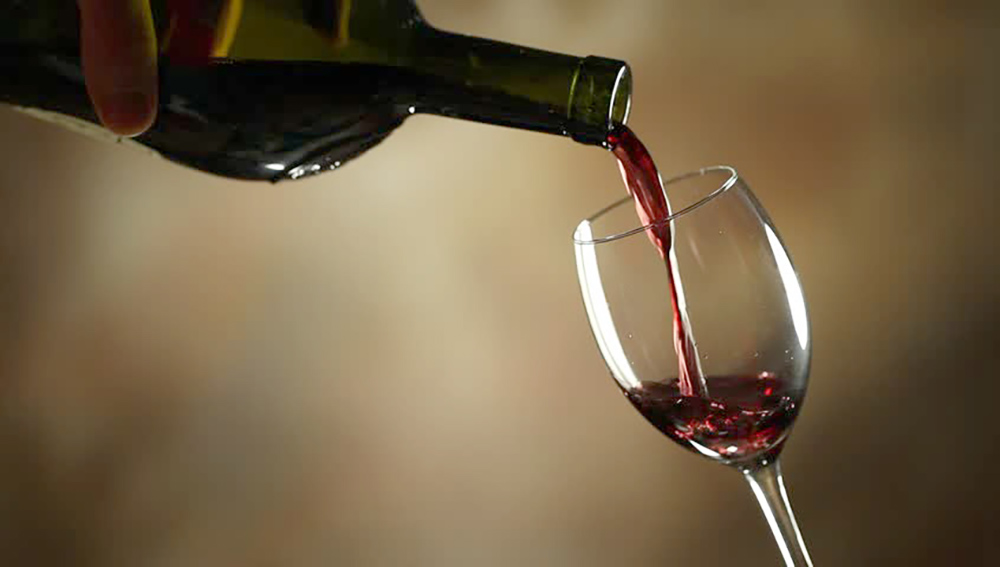By David Setley
‘Tannins’ is a wine term I am frequently asked to explain to folks who come into the store. I’ve found that even wine enthusiasts who have enjoyed wine for many years find the term to be confusing. So what are tannins? Let’s take a deeper dive.
Scientifically speaking, tannins are a phenolic compound. According to sciencedirect.com, phenolic compounds are among the most common chemicals found in many plants throughout the world. They are one of the most significant secondary metabolites (the most important components behind the health benefits and medicinal properties of the plants) and are largely responsible for the antioxidant attributed to many so called “superfoods.”
How do tannins get into the wines that we drink? Tannins are present in the skins of wine grapes. After harvesting the grapes, the winemaking process continues with what is commonly called the crushing of the grapes. I know we all just had an image of Lucille Ball stomping grapes in a gigantic barrel in Italy, right? In modern winemaking, Lucille stays on the sidelines as crushing is accomplished by a machine that very gently squeezes the grapes enough to separate the juice, referred to as ‘must’ in wine-speak, from the skins, seeds, and stems, called ‘pomace’. The overwhelming majority of wine grapes, regardless of whether they are red or white grapes, have clear juice. Without the skins having contact with the juice during fermentation, most all wines would be white. In other words, if the winemaker’s goal is to produce a white wine, he or she removes the lees before the juice continues on to fermentation. The exception are grapes referred to as Teinturier grapes, such as one of my favorites, Alicante Bouschet from Portugal. Treat yourself and try the Cartuxa E’vora Tinto Reseva 2016. This outstanding red wine from the Alentejo region of Portugal is 70% Alicante Bouschet and 30% Aragonez and the best example of a wine made from Teinturier grapes I have experienced.
If a red wine is the objective, the ‘must’ and the ‘pomace’ remain in contact in a process called maceration. Simply stated, maceration is a soaking process where the tannins are gradually transferred from the skins to the juice. The juice will take on the color, the flavor, and the antioxidant qualities discussed above. The duration of maceration depends on how tannic the winemaker wants the wine to be. For most red wines, maceration can be as short as a week or two, and as long as a month or so. In general, the longer the skins have contact with the juice, the higher the concentration of tannins. The thickness of the grape skin can also play a part in this. It is all part of the science and artistry of winemaking. As you may have guessed, rosé wine is accomplished by allowing the skins to macerate for a very short time in the juice, resulting in the familiar pink color.
In addition to color, tannins affect wine in two significant ways by adding to the flavor and mouthfeel of the wine. Prior to fermentation, wine grape juice is sweet. In fermentation, yeast consumes much of the sugar and turns it into alcohol and carbon dioxide. The sugar that remains is called residual sugar and is a major determinant in how sweet or dry the wine is. Tannins have a slightly bitter taste that, together with what residual sugar remains, adds to the complexity of red wine. Bitterness may not sound appealing, but think of how teas, coffees, and dark chocolates have significant bitter components to the taste but are still considered delicious by many. It is the same for wines. Finally, tannins give wine an astringent effect, commonly referred to as dryness. As mentioned, tannins are a phenolic compound, which bind proteins. The saliva on your tongue and in your mouth is full of proteins that the tannins bind, making your tongue, gums and pallet feel dry. This is why high-tannin wines pair well with steak. The tannic effect counters the fattiness of the meat.
If you would like to experience the tannic effect of wine for yourself, buy a bottle of Pinot Noir (a relatively low-tannin red wine), a bottle of Cabernet Sauvignon (a relatively high-tannin wine), and a bottle of Tannat. Tannat is from Uruguay and is alleged to be one of the most tannic wines in the world (winefolly.com). A couple Pinot Noir options to consider would be the L. Tramier & Fils Pinot Noir Reserve from France, or the Montinore Estate Pinot Noir from Willamette Valley, Oregon. For the Cabernet Sauvignon, how about a Cab-based blend from Bordeaux, such as the Chateau Carbonneau La Verrie’re, or the Daou Cabernet Sauvignon from Paso Robles, California. For a Tannat, try the Garzon Single Vineyard Tannat. You will not regret it. Pour a tasting of each the three varietals and observe them side-by-side. Notice the variation in the darkness and the opacity of the wine from the least to the most tannic. Take a couple sips of each in order of least to most tannic and notice the astringent effect of the more tannic wines. And, of course, enjoy the wine!
Another common question related to tannins is whether or not they cause headaches. According to Harvard Health Publishing Online, maybe, for those who are particularly sensitive to tannins, but for the majority, no. The likely suspect for most is the alcohol. Alcohol can cause blood vessels to dilate, thus causing headaches. If you are someone who gets headaches when drinking red wine, drink a glass of water for each glass of wine. For most this will help alleviate the problem.
I hope this short discussion has given you a bit more understanding of this complicated wine term. As always, if you have questions or comments, contact me at dsetley@passionvines.com or stop the Somers Point store. Until next time, Happy Wining!
David Setley is enjoying his retirement from higher education as a wine educator and certified sommelier at Passion Vines in Somers Point, New Jersey.






